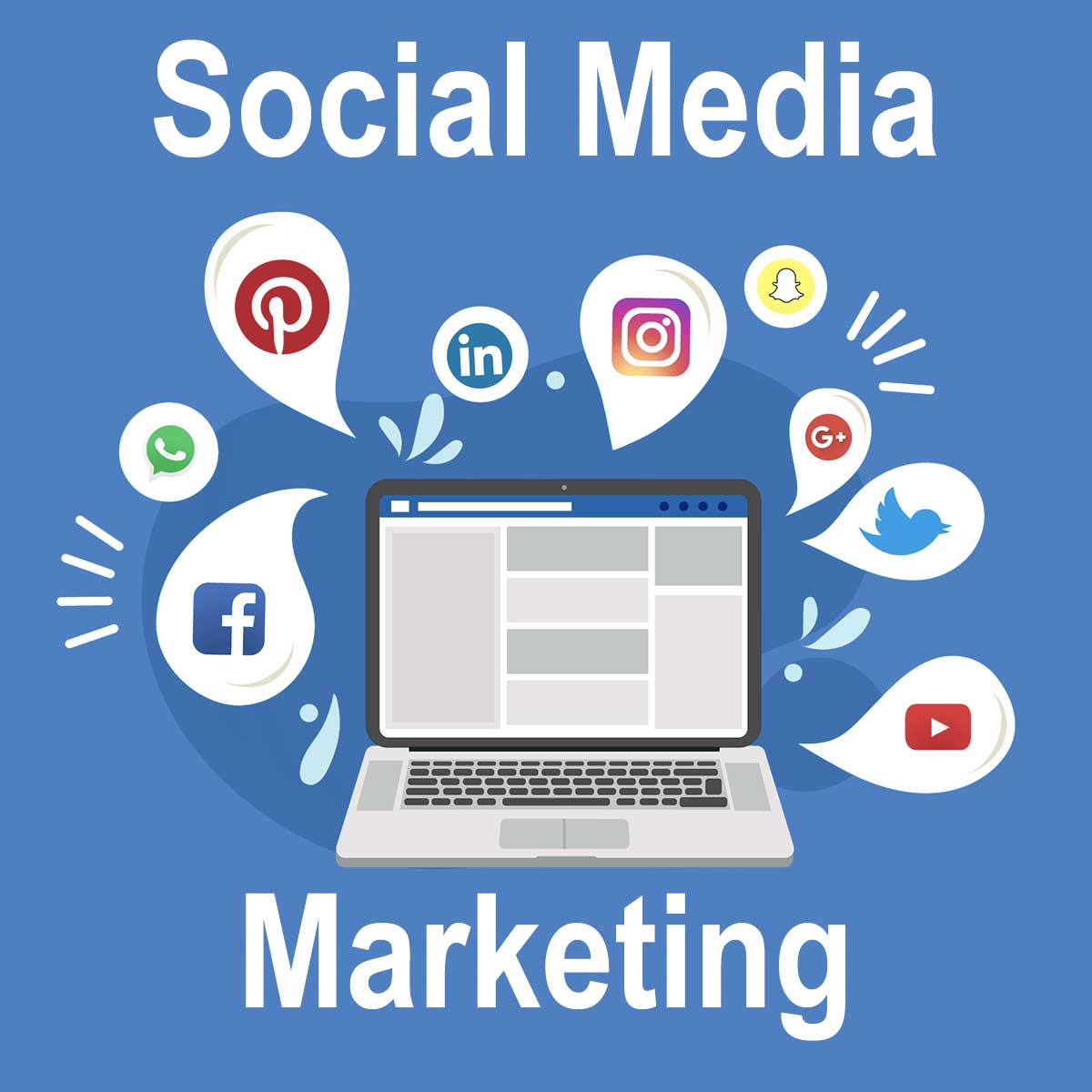Social Media Marketing


Areas Served: Parsippany, Parsippany-Troy Hills, Lake Hiawatha, Mt. Tabor
Social Media Marketing For Local Business
![]()
To succeed in Social Media Marketing, you must understand the basics. You must cover topics like audience personas, creating posts on time, and hashtag performance. Also follow best practices and tactics to increase organic and paid likes.
It is recommended to begin with simple objectives that will help you gain insight and track progress. By the end you will have a clearer picture of the right path to take. To make your efforts more effective, you can try experimenting with different strategies to find what works and which don’t.
Build Your Target Audience With Social Media Marketing
![]()
Building audience personas for social media marketing starts with researching your target market. You can use social listening tools to gather information about what people are talking about online. You can learn about the challenges your audience faces and the things they wish to accomplish. This will help you create a persona for your audience. Once you have a persona, do extra research to fill in any gaps. You can also conduct research through paid tools.
A social monitoring tool will help you create your personas. These tools let you perform social monitoring and social listening to discover what your target audience is most interested in. You can also mine social data from Twitter, LinkedIn, and Facebook Insights. Individual profiles can also be useful to illustrate your persona. By building your personas, you can tailor your content to the individual interests of your target audience.


Social Media Marketing And Your Ideal Customer
![]()
A social media persona is a model of your ideal customer. They help you tailor your marketing strategy to your target audience. By defining your persona, you can avoid copying your competitors and make your content more relevant to your target audience. And if you are targeting your audience on social media, you will be more successful and enjoy a higher ROI than you would with other types of ads. It’s a win-win situation for everyone.
Once you’ve defined your audience personas, it’s time to learn about their behavior and characteristics. By researching your audience on different platforms, you can learn about their habits and their interests. Sprout’s social analytics suite offers comprehensive audience analyses across all platforms. The most important thing to remember when creating audience personas for social media marketing is to research your target audience. You’ll have to do research on different social media channels and identify which features they want from you.
Social Media Marketing Timing Strategies
![]()
One of the best ways to engage with customers is by posting regularly on social media. There’s a “sweet spot” when it comes to posting on Facebook. Ideally, you should post twice a day, ideally between 12 a.m. and 3 p.m. Depending on your product, you may need to experiment with different posting times. However, the timeframes are generally fairly consistent.
In addition to being consistent in your posts, you should try to avoid copying what other brands do. The most successful brands experiment with different types of content and find a format that works well. Avoid using the same format as other brands – your audience will soon learn what to expect. Instead, diversify your content and style and reserve certain days of the week for certain types of posts. In this way, your social media marketing strategy will remain relevant and keep your customers interested.


Hash Tag Performance Strategies In Social Media Marketing
![]()
While you may think that using hashtags in social media marketing is a complicated task, it really is not. All you need is a few tips and tricks, and you’ll be on your way to hashtag success. Here are some social media marketing best practices for hashtags. They’re not complicated, but they’re important! Use them wisely and watch your social media presence grow. After all, hashtags are a great way to create awareness for your brand or product, and to create conversations.
The first tip is to measure your hashtags’ performance. You can track how many times your hashtags are used in your posts and see how much you can optimize for them. This way, you’ll be able to know if your hashtags are driving traffic to your website. Additionally, you’ll be able to find out what type of engagement your posts are receiving, which is essential for effective social media marketing.
Marketing On Social Media With Organic And Paid Likes
![]()
When it comes to marketing on social media, it is essential to understand the differences between organic and paid likes. Organic likes are those that you earn by sharing your content on the social media platform without paying for it. Paid likes, on the other hand, are earned through advertising. Social media advertising campaigns are increasingly becoming integrated, which means that organic and paid content work together to serve your audience. In fact, some marketing experts recommend combining paid and organic content for optimal results
To maximize the effectiveness of organic social media strategies, you must understand how the algorithms on Facebook and Twitter sort your content and determine how relevant and enriching it is for your audience. Social media marketing strategies rely on getting your content in front of customers and understanding these algorithms can be difficult. However, there are tools and services that make it easier for you to understand how organic and paid social media activities work together.


Paid Social Advertising As A Marketing Strategy
![]()
Paid social advertising is an excellent way to boost your visibility and reach. Paid social campaigns allow you to target a particular audience and deliver it directly to them. Paid social marketing is an excellent way to boost the visibility of your organic content and generate conversions.
By combining organic and paid social campaigns, you’ll be able to build a loyal audience and generate a steady stream of leads. However, the differences between organic and paid likes in social media marketing will make you wonder which one to use.
Content Formats In Social Media Marketing
![]()
There are a few different content formats that you can use to promote your social media campaigns. These include short, snappy posts, long-form articles, videos, and case studies. The purpose of these formats is to tell stories and share insights.
The most basic and straightforward type of content format is the blog post. Blogging is a great way to create content, because it is easy to produce and doesn’t require the use of many images. Despite the simplicity of blog posts, they still provide plenty of information. Moreover, they have the advantage of being short, which means that they don’t require much effort. This is great for small businesses because they don’t have to worry about having to produce hundreds of pages of content to keep their blog fresh.

Online Marketing Services


Organic SEO Services:
![]()
Organic SEO (aka. organic SEO, or organic search engine optimization) helps move your website toward the top of Google search results page. Then, customers find you instead of your competitors when they search for phrases related to your website.
It doesn’t pay off as quickly as other marketing options, but organic SEO is a fantastic long-term investment. Organic page rankings last much longer than alternatives like Google Ads.

Local SEO Services:
![]()
If your business is limited to one specific place (for example: a retail store, a service area, or even a single state) then the most beneficial marketing strategy for you would be local SEO.
Local SEO (aka. local search engine optimization) helps connect your business with local potential customers.
Google doesn’t like to recommend strangers, so if your business is new it takes time to build trust. Local SEO is the process of building up that trust, which we can do in many ways. Once Google trusts your business, they will begin to recommend you to relevant local customers.

Google Ads Management:
![]()
Need results quickly? Try Google Ads. While SEO slowly moves your website toward the top of Google search results over the course of months, Google Ads lets you pay to jump straight to the top. Google Ads are great for quick exposure, like flash sales – or drumming up some quick business when things are slow.
The only downside to Google Ads is its lack of permanence. Your presence on Google searches disappears completely the moment you stop paying.

Social Media Marketing:
![]()
Social media marketing is one of the most cost-effective marketing strategies a small business can employ to reach their target audience and promote their brand, product or service. It gives you the ability to get immediate feedback from your customers, as well as insights about your target demographic.
The key to building your audience is regular quality content that gives people a reason to follow you (offer exclusive promotions, provide entertainment, or be helpful or informative about topics your followers care about). It is also about engagement. Interact with your followers to build your relationships.

Email Marketing:
![]()
Email marketing is the use of email to promote your brand, product or service. Most people check their email at least once per day, so it is still one of the easiest ways to open a line of communication with your customers.
The key to email marketing is providing value in the content that you send. Don’t spam your customers with emails that they won’t appreciate – make it personal. Offer promotions, loyalty rewards, or quality content that is entertaining or informative and your customers will look forward to your emails in their inbox.

Content Marketing:
![]()
Content marketing is a marketing strategy that relies on creating quality original content (articles, videos, podcasts, infographics, etc.) to your target demographic with the intent to promote brand awareness so customers will remember you, and consider you the expert when they need your products or services.
It is important to provide useful or relevant content that helps viewers in some useful way – even if it’s just to provide a good laugh. If your customers see your content as spammy, it will have an adverse – rather than a positive – effect on their future purchasing decisions.

Brand Marketing:
![]()
Brand Marketing is a long-term marketing strategy that works to steadily grow a brand’s recognition, trust and authority with the intention of building an army of loyal customers. Brand marketing doesn’t focus on a specific product or service, but on the brand as a whole. If customers trust a brand, they are more likely to purchase or recommend any product or service that they offer.
A brand should have a consistent personality that is reinforced by everything from the logo, to the packaging, to social media interactions. This is your company identity, and anything you do publicly should communicate your company values, what you offer, and build your brand’s reputation.

Public Relations Marketing:
![]()
Public relations marketing works by creating and upholding a positive reputation for your company in the eyes of the public, particularly with your customers but also partners, employees, media, investors & more. The idea is to associate your brand with positive attributes such as honesty, success, importance and relevancy.
The credibility built from this positive image, and reinforced by the third parties that present this image (television, newspapers, magazines, organizations, etc.), will make potential customers remember you when they require products or services you provide.

